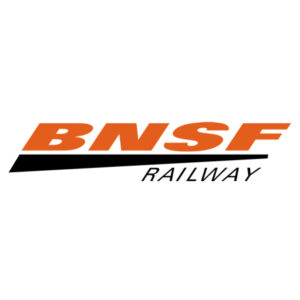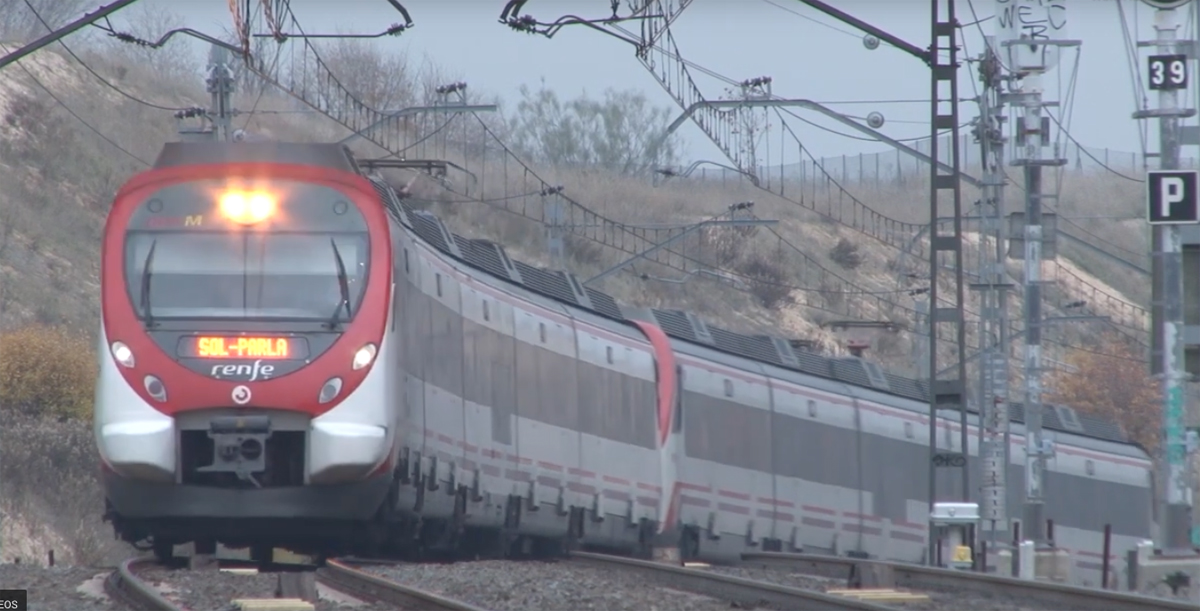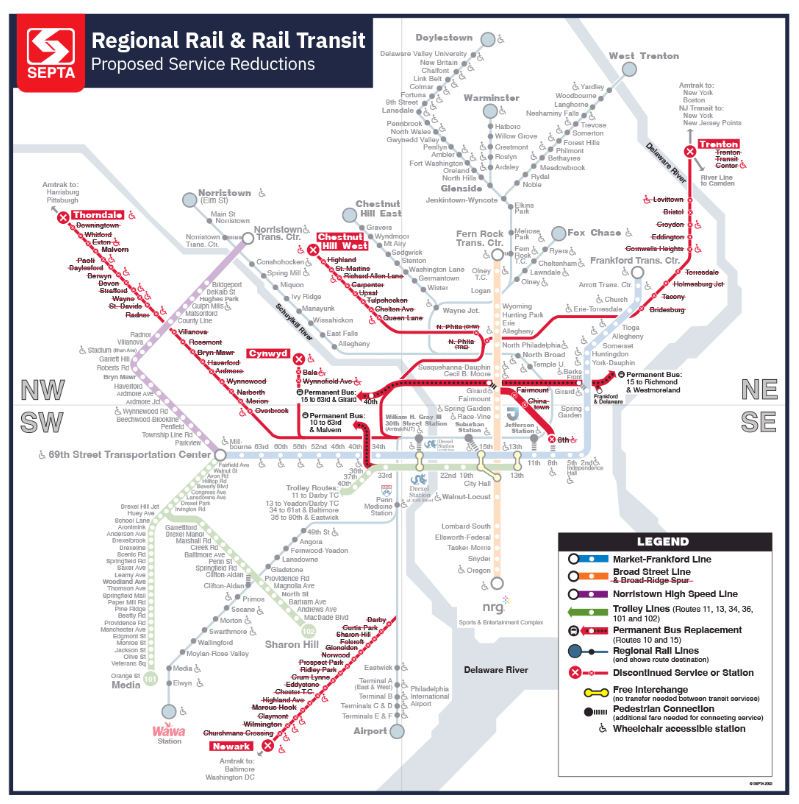 TOPEKA, Kan. — The Kansas Court of Appeals has found for BNSF Railway in a case regarding state law on blocked grade crossings, saying in a decision released Friday that federal jurisdiction preempts state law.
TOPEKA, Kan. — The Kansas Court of Appeals has found for BNSF Railway in a case regarding state law on blocked grade crossings, saying in a decision released Friday that federal jurisdiction preempts state law.Officials in Chase County, Kan., had cited the railroad for blocking grade crossings for more than the 10 minutes allowed by state law. BNSF had challenged the law, arguing that because railroads are engaged in interstate commerce, they can only be regulated by the federal government [See “BNSF challenges Kansas law on blocked crossings,” Trains News Wire, Sept. 24, 2018.] In reversing an earlier district court decision, the court agreed, saying in its decision that because the Kansas law “specifically targets railroad carriers and has an effect on railroad operations that is more than remote or incidental, it infringes upon the exclusive jurisdiction of the [U.S.] Surface Transportation Board.” Among other facts, the court’s opinion cited a recent ruling in Indiana on a similar case [see “NS wins challenge of Indiana blocked-crossing law,” Trains News Wire, Sept. 25, 2018].
The court’s complete opinion is available here.















Mister Robbins:
You are asking for detailed information concerning types of easements and the effects on the various estates. The reply would constitute legal advice which I cannot give and will not give on this forum.
I can only compliment you on your diligence concerning the subject and ask everyone reading this to turn to you for detailed information. I cannot either confirm nor deny that you are accurate in what you say.
I hope you understand.
The above comments are general in nature and do not form the basis for an attorney/client relationship. They do not constitute legal advice. I am not your attorney. Go find your own damn lawyer.
Ms Harding: After I saw your comment about the inferior estate versus the superior estate some questions came to mind and I did a little research on-line about easements. Of course, I am in no way an expert nor am I questioning your legal opinion, but what you wrote about the superior versus the inferior seems to differ when one is talking about easements for two rail companies crossing each other. Working in Joint Facilities, I have experienced the effect of these easements but before this had never heard the term of an in gross easement. So I am not pretending that I am familiar with your description of the superior estate versus the inferior estate or an in gross easement. The in gross easement would seem to be what occurs in the case of the two rail lines crossing. The property owner sets the terms by which the easement holder is permitted to cross. In a joint facility agreement, I have seen the term easement used but have also seen just a grant of permission to cross without using the easement label. All of these agreements written at different times and in different states vary in what terms they use. Whatever terms they use, the grant to cross always has the property owner, which is usually, but not always, the party who installed the first rail laid at the crossing. And the property owner will set that the second rail line has to pay the costs of the crossing – usually 100% for the first rail – and then sometimes, but again not always, a 50/50 split when and if a second track is laid across the first railroad. That method seems to me to be what is defined as an easement in gross. The second rail company, which holds the easement, is not superior to the owner because the owner sets the terms.
Why would a rail/street crossing be different than that – that is the superior versus the inferior. The other thing I wonder about is what about the case where the road was there first and the rail line got an easement to cross it. Does the railroad then become the superior estate?
Another question that I also have is the nature of the title record. I have never done any title searches on rail/highway crossings so I don’t know if the government followed any kind of policy about recording the easement. I have run across several cases where rail companies back in the 1800’s made undivided 50/50 splits of joint property with another rail company, but this ownership split was never recorded (I will add that when I have come across the Pennsylvania RR on some of these that they seem to have done a good job of making sure that the undivided property split did get recorded). Other companies seem to have relied on their joint agreement establishing the undivided ownership (the joint NYC/Rock Island line from Englewood to LaSalle Street was a good example of this – whereas the three way split at the Englewood Station between the PRR/RI and NYC was a good example of the PRR getting it recorded).
I am not familiar with Kansas rail charters, but in other states what you see is the charter granting the railroad the permission to cross the public roads. I assume it was done that way to expedite the building of the railroad so that the railroad would not have to obtain permission from every government jurisdiction in the path of its right of way. So you have to wonder how religious were the rail companies and the various government entities back then in establishing an official easement – or did they just rely on the charter?
If there is no official easement except the one that exists because the road has been there in place for many years, how does that affect the superior estate versus the inferior estate?
Another example I can think of is Chicago which seems to have granted rail lines permission to enter the city and cross streets by ordinance. John Evans, later infamous for his involvement in the Sand Creek Massacre, was a Chicago alderman who basically met the PFW&C at the Indiana/Illinois State line with right of way purchased and ordinances passed in Chicago for the Fort Wayne Line to enter the city. So the permission was granted by ordinance, but did anyone write an easement for each street crossing? Or did they figure that the ordinance covered everything? Of course, most of those crossings, if not all, have been eliminated by later Chicago ordinances requiring that the track be elevated. If these crossings by the Fort Wayne made them the superior estate, how can the city later come back and pass another ordinance requiring them to be elevated? That would seem to make any street/rail easement an easement in gross because the owning entity is requiring the easement holder to comply with a new stipulation.
In my limited experience, I have found the government of the 1800’s somewhat sloppy about properly recording title. Ohio comes to mind in the way they did not record the property acquired for their canal system. This led to a problem for the Attorney General of Ohio back at the close of the 19th century as the canals were being filled in and the state went to sell the land. There’s a little dispute now between Ohio and a railroad over a property title which I think can be traced back to sloppy 1800’s recording. So I can believe that easements and agreements about crossings may be one of those things that it would be hard to find a paper trail for.
I agree with what I think is the general opinion here that the railroads are only going to buy themselves a lot of new regulations and fines if they continue to excessively block crossing and rely on the legal excuse that only the federal government can regulate this. However, this thing about the easements has me perplexed about what legal property requirements would apply. If that got involved, wouldn’t the government entity and the rail company have to go back and research – for each crossing – the original state charter and the powers granted to the rail company along with any ordinances or easements that may have been set up for all of these crossings? Would there by arguments about who was the superior versus the inferior estate or if this was an easement in gross? Or if the lack of the easement being actually recorded in whatever version of a land office there was in that jurisdiction would also complicate matters?
I have to commend you on the comment about the easements because I hadn’t realized what the different types were before seeing it and pondering all the different issues that could be raised. Thanks.
Mr. McFarlame,
You have a lot more confidence in the Congress than I do. As Anna says this will be a political issue. Longer and longer trains blocking crossings longer and longer along with arrogant attitudes from the railroads conbined with a public with little tolerance for inconvenience are the fuel for a lot of anger. That anger can translate to political pressure to stick it to the railroads. After all RR’s do almost nothing to make friends with the public, just irritate them, and their lobbying $ will only go so far on these angry times. As I said, not tomorrow, but it will happen. Regs can be federal without state input. Or congress can delegate to the states, as they do a lot of things already.
The thing most people don’t understand is, a vast amount of these grade crossings were built “after” the railroads were in place….just sayin’!
I can think of several ways to poke holes in this decision but what actually happens depends on how hard the County wants to push it. If this goes federal (we have cases in more than one states so it should) we will end up with a ruling which is binding throughout the land.
The above comments are general in nature and do not for the basis for an attorney/client relationship. They do not constitute legal advice. I am not your attorney. Go find your own damn lawyer.
An ancillary tho’ relevant side issue is the trucking lobby’s ongoing effort to federalize regulations, to over-ride individual state limits.
Mister McFarlane:
That’s the legal theory under which this ruling was handed down. However what Congress will or will not do is a political issue upon which I cannot comment.
The above comments are general in nature and do not for the basis for an attorney/client relationship. They do not constitute legal advice. I am not your attorney. Go find your own damn lawyer.
R. Messera,
That is one that won’t happen, there’s not way Congress would let states preempt interstate commerce laws, which this happens to fall under(basically that railroads are engaged in Interstate commerce, which is subject to Federal jurisdiction, not states). The lawyer amongst our group can contradict or correct this statement as necessary, but saying that Congress will let states take control over this matter is probably missing the boat.
We keep ” winning” these cases and folks get angry enough someday they will convince congress to change the current preemption laws. Won’ t happen next week, but just watch, it will happen.
Mister Berg:
Actually, that works against the railroad. On the assumption that they outright own the right-of-way, the local government putting a street across it does not purchase the land, they simply obtain an easement for the crossing. Thus, the railroad is the inferior estate and the government is the superior estate.
What the court ruled has to do with jurisdiction. The railroad claimed (and the court backed them up) that they were subject to federal jurisdiction which is superior to local jurisdiction. There are some unintended consequences to this ruling but it remains to be seen if the whole thing has legs.
The above comments are general in nature and do not for the basis for an attorney/client relationship. They do not constitute legal advice. I am not your attorney. Go find your own damn lawyer.
So you’ve no issue if BNSF or any other railroad simply parks a train for as long as they feel like it; potentially blocking multiple crossings?